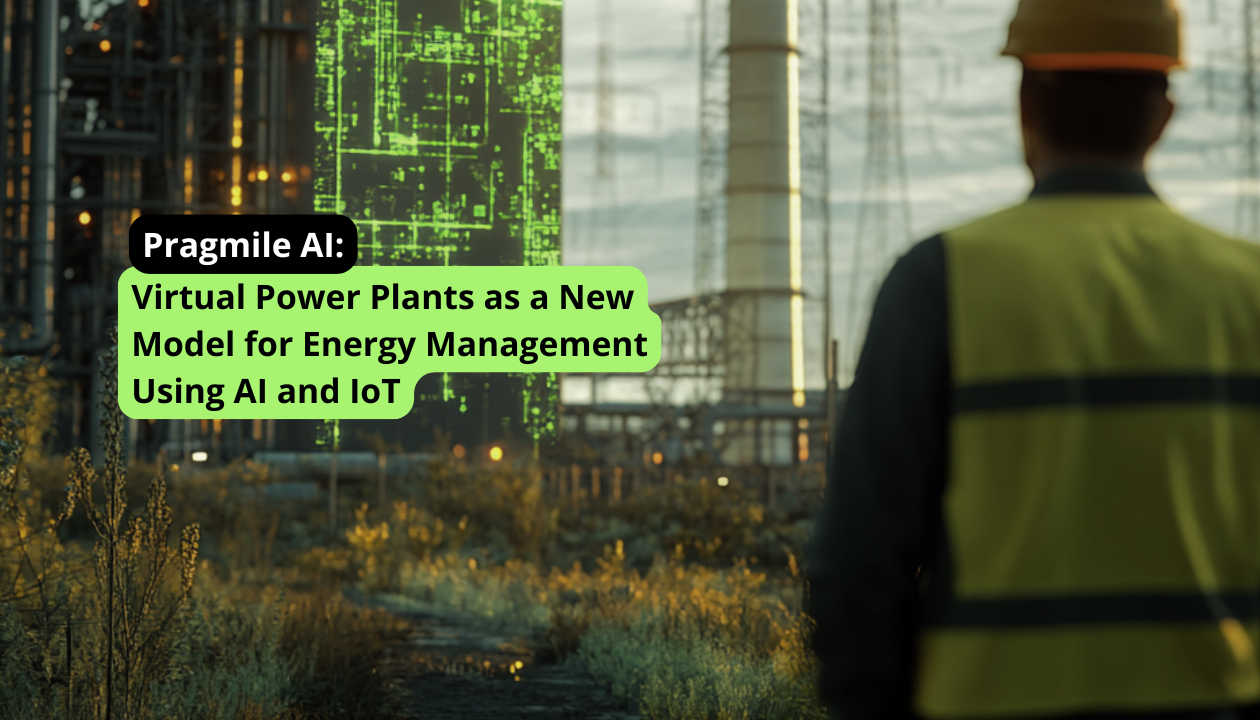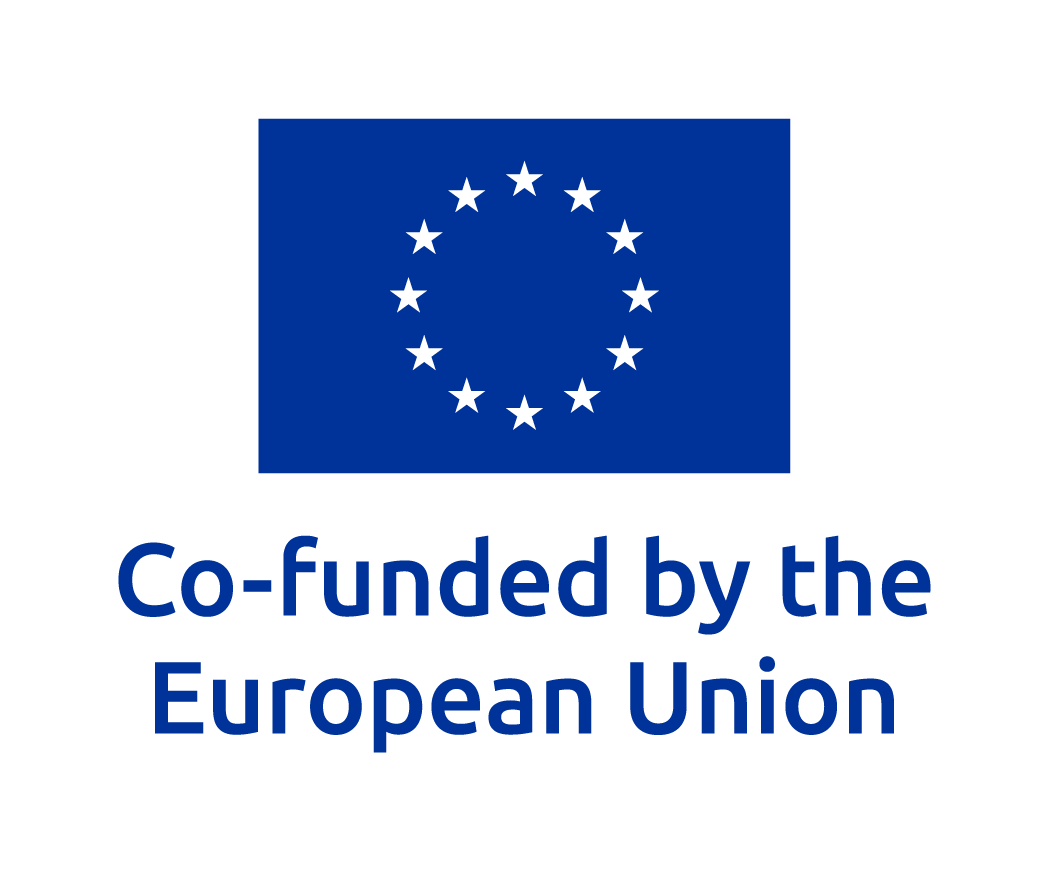
Published: October 2, 2024
Virtual Power Plants as a New Model for Energy Management Using AI and IoT
In the era of rapid energy transformation, sustainable energy management is becoming crucial. One of the most promising solutions in this area is the concept of a virtual power plant supported by smart power grids. When combined with technologies such as artificial intelligence (AI) and the Internet of Things (IoT), it sets a new standard in energy management. Virtual power plants offer an innovative approach to stabilizing power grids and optimizing the use of renewable energy sources such as solar and wind, significantly changing the energy landscape.
What Is a Virtual Power Plant and How Does it Work?
Virtual power plants are not physical objects. They are advanced IT systems that combine distributed energy sources, such as photovoltaic installations, wind turbines, energy storage and other renewable and conventional sources, into a single, integrated system. The aim of a virtual power plant is to manage these distributed resources centrally and optimally, in order to support the stability of power grids and the efficient use of energy.
A key element of the virtual power plant operation is the ability to monitor and control each energy source in real time. This allows the system to dynamically respond to changes in energy demand, weather conditions, or the availability of individual resources.
Virtual power plants work with smart power grids that allow them to send and receive information about current energy consumption and production. This allows the system to automatically balance demand and supply, which helps stabilize power grids, especially when renewable sources are used in large amounts, which are inherently unstable.
The virtual power plant not only allows for better energy management, but also for energy trading on energy markets. Algorithms using artificial intelligence analyze data and predict future demand and production capacity, allowing power plant operators to sell energy at the most favorable times.
Such solutions are increasingly being implemented around the world. An example is the German company Next Kraftwerke, which has created one of the largest virtual power plants in Europe. It aggregates thousands of small and medium-sized renewable energy producers, such as photovoltaic farms and wind farms. Thanks to advanced algorithms and a digital platform, it is able to optimize energy production and sell it on the market in the most efficient way. Another example is Tesla’s virtual power plant in South Australia.
This innovative energy management concept has significant development potential. The global virtual power plant market was valued at $1.42 billion in 2023 and is expected to grow to $23.98 billion by 2032..
Software for Virtual Power Plants
Virtual power plants use advanced software that plays a key role in energy management. Virtual power plant software integrates various energy sources, enabling their effective monitoring and optimization. Thanks to the use of artificial intelligence, these systems are able to analyze data in real time, which results in better management of energy resources. An example of virtual power plant software is C3 AI Energy Management, which uses AI to forecast energy usage and identify opportunities to improve energy efficiency. This system combines data from different sources and enables users to make better decisions about energy management.
Another advanced energy management system example is Evergen software, which connects distributed energy sources and allows for remote monitoring and management. This system enables grid operators and private and business users to better understand their energy usage and adjust production and consumption to market and weather conditions. Pragmile has also taken the first step in this area by designing and implementing Solar Spy – an AI-powered energy management system for photovoltaic farms, operating in a SaaS model. This solution could successfully form the foundation for the creation of technologically advanced software for virtual power plants in the future.
The role of AI and IoT in virtual power plants
Virtual power plants are complex systems that require the management of huge amounts of data. Artificial intelligence and the Internet of Things play a key role in optimizing their operation.
AI for energy enables:
- Optimization of Energy Production and Consumption – AI algorithms can predict energy demand, optimize equipment operation and energy storage, leading to increased energy efficiency.
- Demand Management – AI allows for dynamic management of energy demand, allowing energy consumption to be shifted in time and take advantage of periods when energy is cheaper.
- Anomaly Detection – AI algorithms can detect anomalies in system operation, allowing for quick response to failures and prevention of potential issues.
- Machine Learning – machine learning models can be used to create increasingly accurate forecasts of energy production and consumption, allowing for better planning of virtual power plants operations.
- Data Collection – thanks to numerous sensors and devices connected to the Internet, virtual power plants can collect huge amounts of data on energy production, consumption and quality.
- Real-Time Monitoring – IoT enables continuous monitoring of the status of devices and systems, which allows for quick detection of issues and taking appropriate actions.
- Remote Management – thanks to IoT, devices and systems included in virtual power plants can be remotely managed, which increases the flexibility and efficiency of management.
The Role of Smart Power Grids in Virtual Power Plants
Smart power grids are systems that use digital technologies to monitor and manage energy flows in real time. By using sensors and IoT devices, they are able to quickly respond to changes in energy demand and optimize its distribution.
In virtual power plants, smart power grids play a key role in integrating different energy sources. They enable efficient management of both energy production and consumption. Virtual power plants can use the data they collect to make decisions about the best times to produce or sell energy. This allows for increased energy efficiency and reduced operational costs.
Benefits of Using a Virtual Power Plant
Virtual power plants offer a number of benefits for both energy market participants and the entire energy system. The most important include the following:
- Optimization of Energy Production and Consumption – virtual power plants combine multiple distributed energy sources (such as wind farms, photovoltaic installations or energy storage), which allows for balancing energy supply and demand in real time. This allows for more efficient use of renewable energy sources (RES), reducing energy losses and stabilizing the grid. AI allows for predicting demand and optimizing production based on historical data and weather forecasts.
- Increased Grid Stability and Flexibility – through integration with smart power grids, virtual power plants provide dynamic management of energy transmission. These grids can adapt to sudden changes in demand, minimizing the risk of overloads and power outages. In practice, this means better management of the instability associated with renewable energy sources such as wind and solar, which can be dependent on weather conditions.
- Reduction of Operational Costs – for operators and consumers using virtual power plants, the key advantage is the ability to reduce the costs of energy production and supply. They eliminate the need to build new, large power plants because they use existing, distributed energy sources. Additionally, companies can use long-term energy contracts at fixed prices, which minimizes the risk associated with price fluctuations on energy markets.
- Energy Trading and Profit Maximization – thanks to advanced algorithms based on artificial intelligence, virtual power plants enable the optimization of energy trading on the market. Users can sell surplus energy when prices are the highest, which increases their profitability. This approach allows for the maximization of profits for both small producers and large energy operators.
- Sustainable Development – thanks to more efficient management of distributed renewable energy sources, virtual power plants contribute to reducing greenhouse gas emissions. Optimal use of solar, wind or energy storages reduces dependence on fossil fuels, supporting climate goals and sustainable development.
Investment in Innovative Energy Management Solutions
Virtual power plants are an innovative approach to energy management that uses the potential of artificial intelligence and the Internet of Things. The integration of these technologies contributes to increased energy efficiency and better use of renewable energy resources. The growing demand for energy and the need to protect the environment make virtual power plants a key element of future energy strategies.
The use of appropriate IT tools and advanced AI algorithms allows for effective management of energy resources and their adaptation to changing market conditions. It is worth investing in the development of technologies related to virtual power plants to achieve better economic and ecological results.
If you want to discuss the possibilities of cutting-edge energy management solutions and learn how they can support the daily functioning of your business, schedule a free consultation with Marcin Jabłonowski – Managing Director and AI Solutions Architect at Pragmile.
Schedule a free consultation with
our AI and technology experts
Take advantage of the latest AI solutions, tailored to your company's needs. Book a consultation with AI solution architects at Pragmile and discover new opportunities in energy management.
Please, provide your business email to schedule a meeting

